Lab Made Diamonds 101
Why Lab Grown Diamonds?
You get it all and more with lab created diamonds: the beauty of a big sparkling diamond, a timeless symbol of forever, the ethics, and the value.
With lab grown diamonds, you can invest more in each other, in your future, and still celebrate your story with an impeccably made diamond ring that could be the NEXT generation’s heirloom. You don't have to wait for an upgrade down the road to get the Dream Ring.
What Do Jewelry Industry Insiders Think of Lab Grown Diamonds?
The attitude reversal we’ve seen over the past few years is compelling. Jewelers and industry vets who used to scoff at lab diamonds are buying them for themselves and recommending them to all their engagement ring clients. It’s just hard to find the downside of lab grown diamonds, and couples know it - so the business has followed suit and grown.
Not everyone has been so willing to endorse lab diamonds. Some in the industry have been reluctant to adopt lab diamonds for a few different reasons. One common reason is that jewelers and dealers carry a high level of mined diamond inventory that they need to sell. Another is that they just can’t change their long-held beliefs about being mined diamond ‘purists’.
But consumer demand has brought lab grown diamonds to the forefront. Some of our biggest, most old-school diamond dealers who were initially resistant to lab are now dealing 80-90% lab diamonds. Even the GIA, the most prestigious global grading lab, grades lab diamonds by the same standards as mined diamonds.
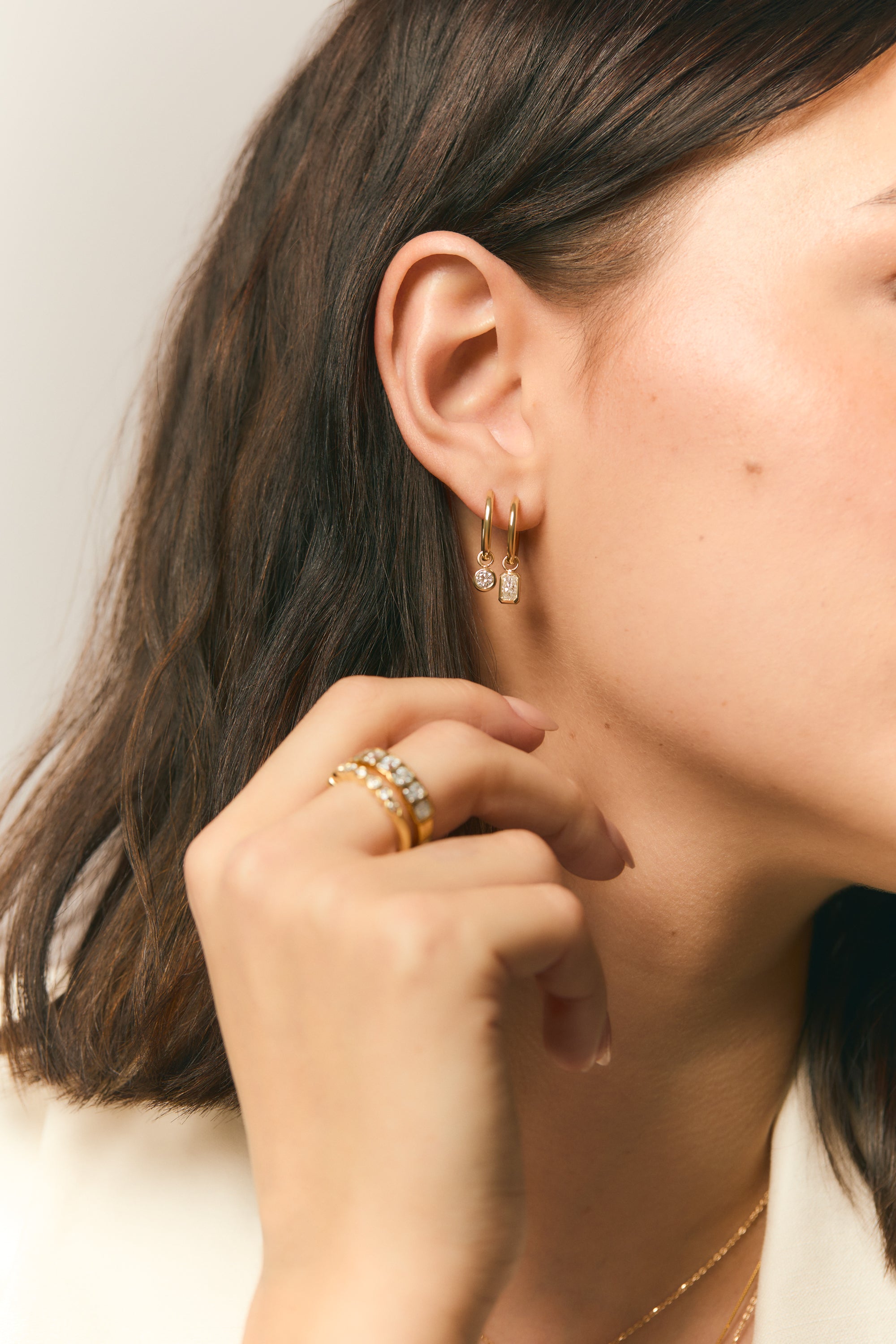
Lab Diamond Rings by Shape

from the world's diamond authority
“This origin story is the main factor that sets laboratory-grown diamonds apart from natural ones, since laboratory-grown diamonds have essentially all of the same chemical, optical and physical properties and crystal structure as natural diamonds.”
– GEMOLOGICAL INSTITUTE OF AMERICA
Who Buys Lab Grown Diamonds?
People from all walks of life. Lab diamonds are not a “budget buy,” they are for people who want the benefits of a diamond without the baggage or unnecessary expense. They are for smart couples who know they don’t need to spend 2-3x more.
We’ve worked with many, many couples who can afford to buy whatever they want - and they choose lab diamonds because they recognize value and don’t like overpaying for luxury products.
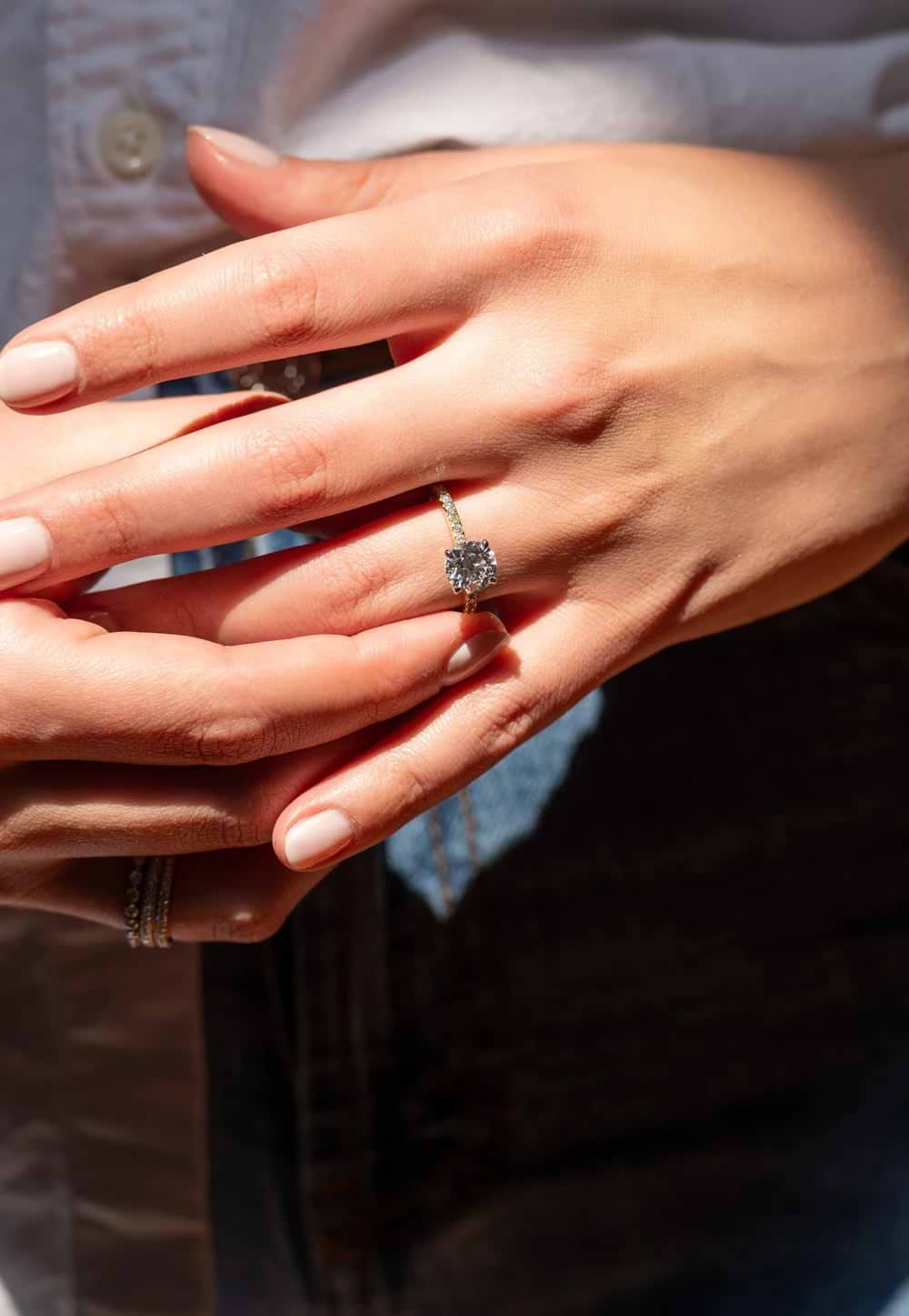
How Do You Make Lab Diamonds?
Scientists grow lab diamonds from a “starter seed” that is the carbon from an existing diamond. Lab created diamonds are made with a combination of extreme pressure and heat or through a method called Chemical Vapor Deposition (CVD).
This is advanced technology that scientific institutions and governments have been working on for years. It’s true; although lab grown diamonds are newer to the jewelry space, they've been in development for decades. The reason it has taken until the last decade or so to use lab diamonds in jewelry is that the process is not simple.
Creating lab diamonds that have larger carat weight and high quality is no easy task. This is one reason why lab created diamond pricing can rise into the tens of thousands. Still, lab created diamonds are going to cost significantly less than comparable mined diamonds.
-

 WHAT ARE HIGH-PRESSURE HIGH-TEMPERATURE (HPHT) DIAMONDS?
WHAT ARE HIGH-PRESSURE HIGH-TEMPERATURE (HPHT) DIAMONDS? -

 WHAT ARE CHEMICAL VAPOR DEPOSITION DIAMONDS? (CVD)
WHAT ARE CHEMICAL VAPOR DEPOSITION DIAMONDS? (CVD)
HPHT happens in a capsule where the natural diamond growing conditions of extreme heat and pressure are replicated. Scientists use a diamond “seed” made of carbon to start the HPHT diamond growing process. The seed is placed in a growth chamber where temperatures rise to 1600°C and pressure exceeds 870k lbs per square inch. The conditions are like those in the earth that form diamonds naturally, and additional carbon atoms are deposited onto the carbon seed which grows into a diamond crystal.
After days or weeks of growth, the diamond is cut, polished, and graded, just like a mined diamond.
Just like the HPHT method, CVD is a fascinating, high tech method that uses expensive equipment and can require months to complete. And once the crystal is complete - just like in HPHT - the diamond is sent for precision cutting and polishing, and then on to third party grading labs.
How are Lab Diamonds Different From Mined Diamonds?
The big difference is in how lab diamonds are made, which is in a controlled environment by scientists. By contrast, mined diamonds are naturally occurring, even if the process of extracting them from the earth is not natural - and many mined diamonds are actually still treated with heat, irradiation, or fillings to enhance their appearance. People - even experts - can’t tell the difference between mined and lab diamonds without specialized, expensive equipment. No one will ever know whether your diamond came from above ground or below.
Mined diamonds were formed before dinosaurs roamed the earth, which IS somehow romantic. But we’re OK just leaving them where they are, a part of Mother Earth.
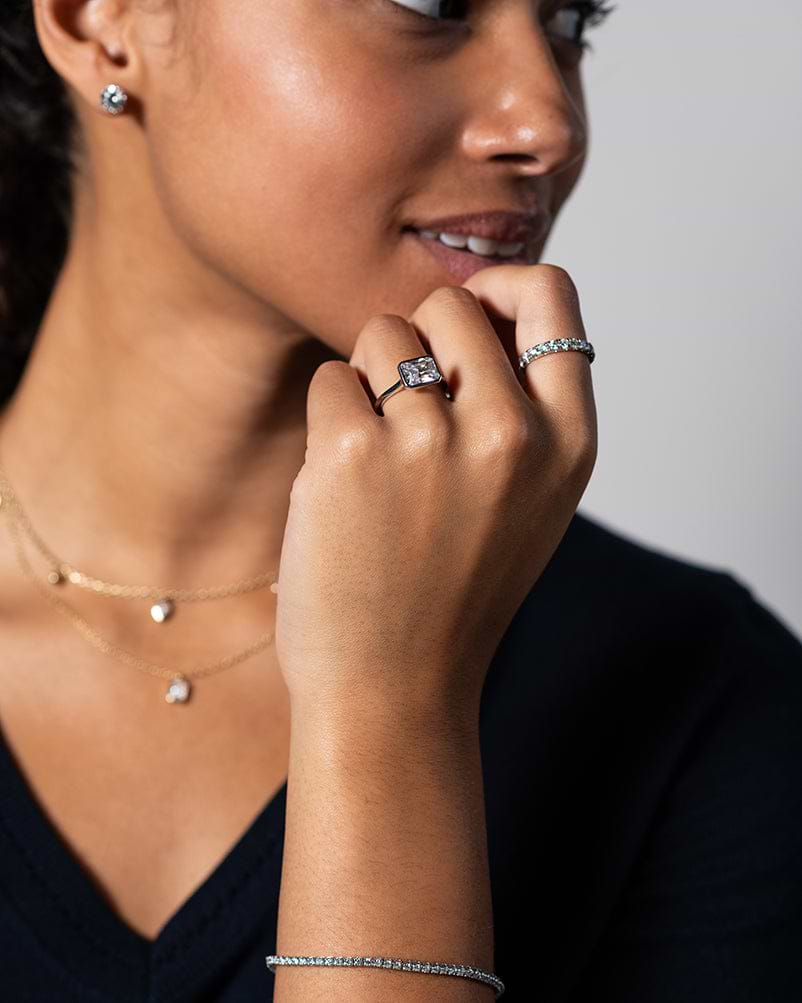
How Much are Lab Created Diamonds?
Lab diamonds are generally priced at least 2-3 times less than comparable mined diamonds. Just like diamonds dug up from the earth, lab diamonds are graded by reputable gemological institutions and are assigned quality characteristics that will dramatically impact price. They are judged by the same 4 Cs as any mined diamond: carat, cut, color, clarity, as well as other data points.
So why do lab grown diamonds cost less than the same mined diamonds?
- There are fewer middlemen involved in lab diamond production and sales. Almost 2 dozen different vendors might touch a mined diamond before it gets to you. By contrast, laboratories can grow, cut, and polish and then send diamonds straight to the lab for impartial, 3rd party grading. This supply chain is much shorter than what it takes in mining and distribution that is typical with mined diamond sightholders.
- Speaking of sightholders, there are massive companies — sometimes intertwined with shady government entities and bad actors — that monopolize the mined diamond industry. They control the majority of supply and have been known to keep billions of dollars worth of diamonds stockpiled. Reports reveal that oligarchs and other bad actors can be major beneficiaries of the trade, so there’s also the risk of corruption that helps line their pockets.
- The largest diamond producer in the world is Russia. Even though the industry is now avoiding Russian diamond sources, diamonds from the other biggest exporter, Africa, must travel a long way, through many countries and governments, before becoming American jewelry.
Plenty of larger lab created diamonds stil cost tens of thousands of dollars. Just like mined diamonds, large carat sizes and very high quality grades are coveted and rarer than your average one carat. This is especially true when compared to lower quality, mass produced mined diamonds that many big box stores and sites carry.
Remember, when comparing diamond prices, it’s important that you’re comparing apples to apples. Diamonds can have some of the same quality grades and still look different to the naked eye. This makes them valued — and priced — very differently.
Lab Diamond Rings
Do Lab Diamonds Last Forever?
Lab diamonds will last forever, just like mined diamonds. They are NOT fake or imitation diamond; those materials will not look as good or last as long as the real deal, whether you like your real diamonds sourced from a lab or below ground.
Plan on spending a lifetime marveling at the fire and brilliance that will radiate from your lab grown diamond. Future generations may also enjoy your lab diamond ring. And everyone will feel great about it, knowing that you never compromised ethics or value in exchange for breathtaking, permanent beauty.
Discover More About Lab Diamonds
- Are Lab Grown Diamonds a Good Investment?
- What’s Plum’s Stance on Lab Grown Diamonds?
- Are Lab Grown Diamonds Certified and Graded?
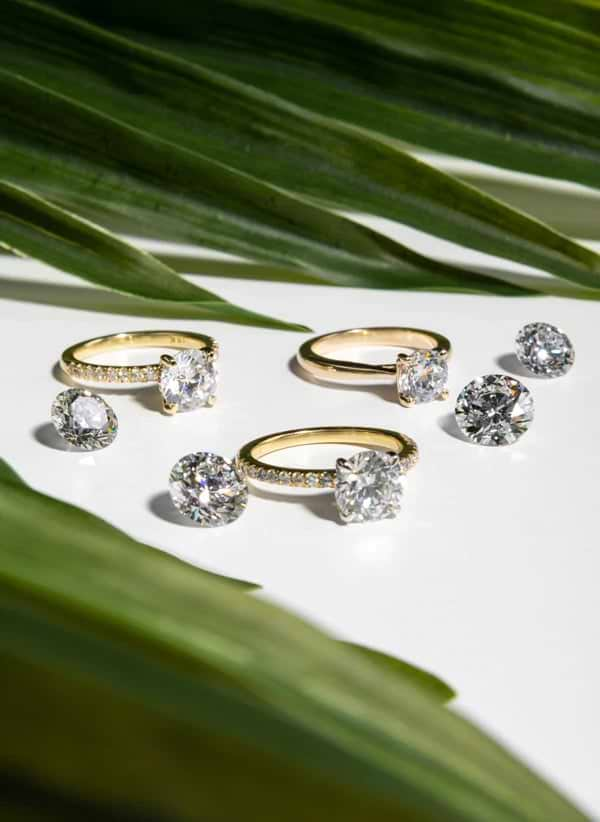
Here's the truth. You won't get back what you originally paid for lab diamonds OR mined diamonds. But you're not buying to sell, you're buying because you're in love and want a symbol of forever. You're buying because a diamond ring is a thing of beauty, not an investment vehicle. Plus, when you start with a lab made diamond, you won't want to upgrade later because you'll get the carat weight you want now.
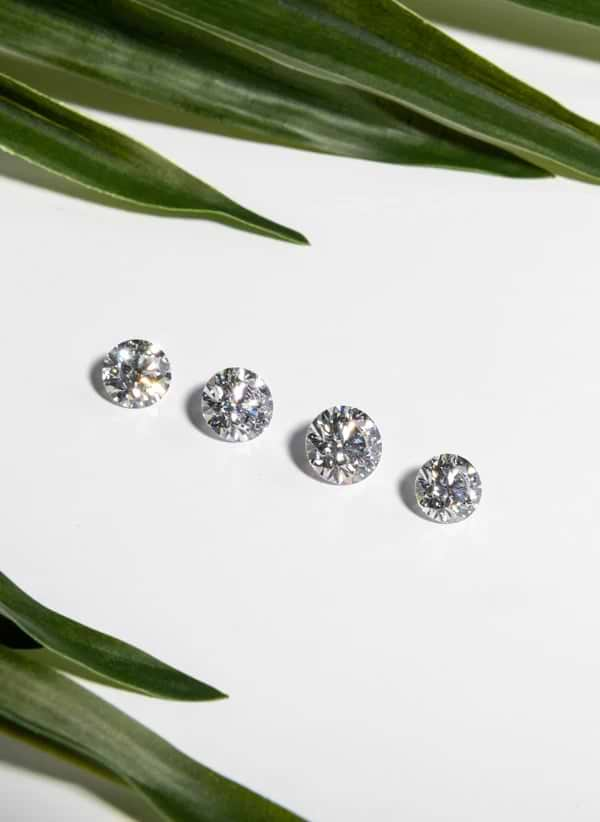
Let's be honest - whether jewelers acknowledge it or not, very few mined diamonds are actually rare, and the majority are not great quality. Nobody talks about that. Our lab created diamonds are better quality than most mass-market mined diamonds because we only offer the highest color, clarity, and cut grades. The same quality in mined diamonds could cost you double the price - or more.
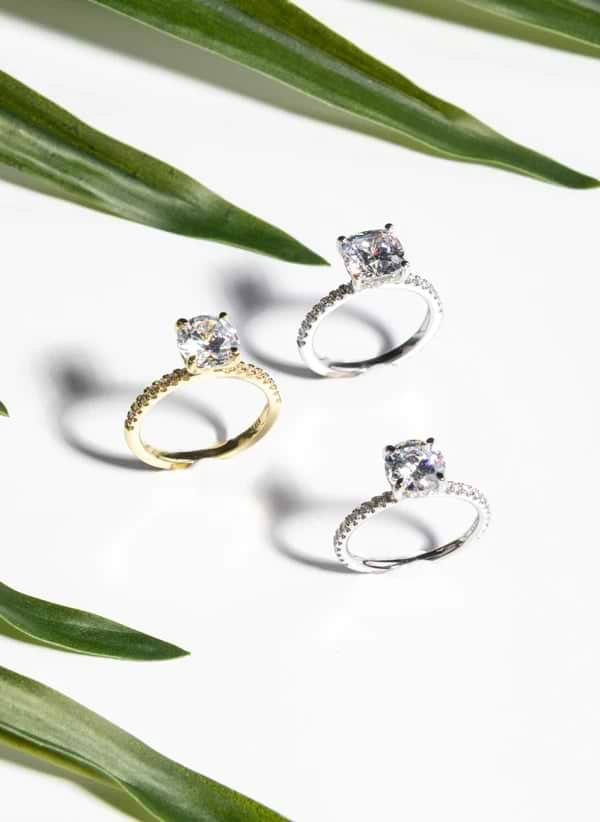
And of course lab grown diamonds are valuable. They are real diamonds with real diamond properties and WOW factor. They last forever, symbolize your love story, and behave exactly the same as mined diamonds. Besides, lab grown diamonds are made with advanced technology over many weeks or even months; they are not cheap or easy to create!
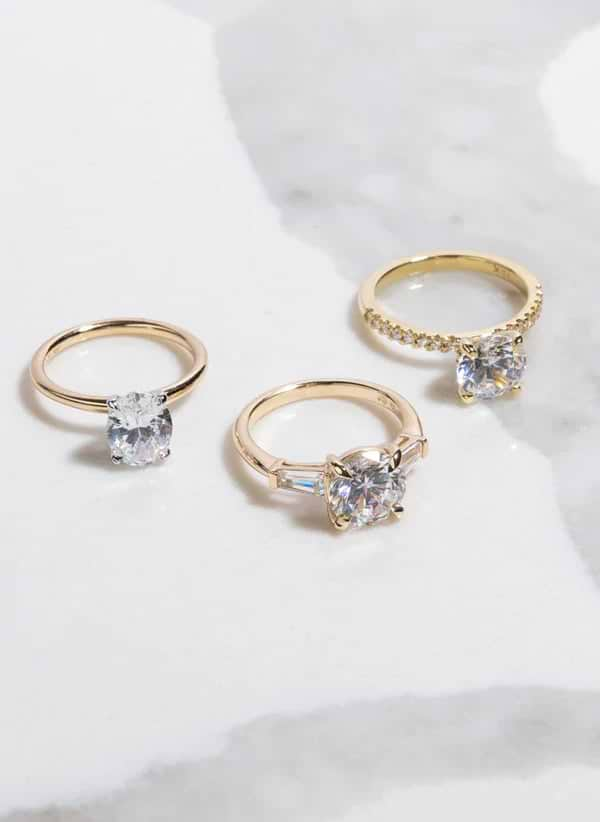
We obviously love lab created diamonds and believe that they are the perfect choice for couples who value quality, carats, ethics, and economics. They check all the boxes and don't require any tradeoffs.
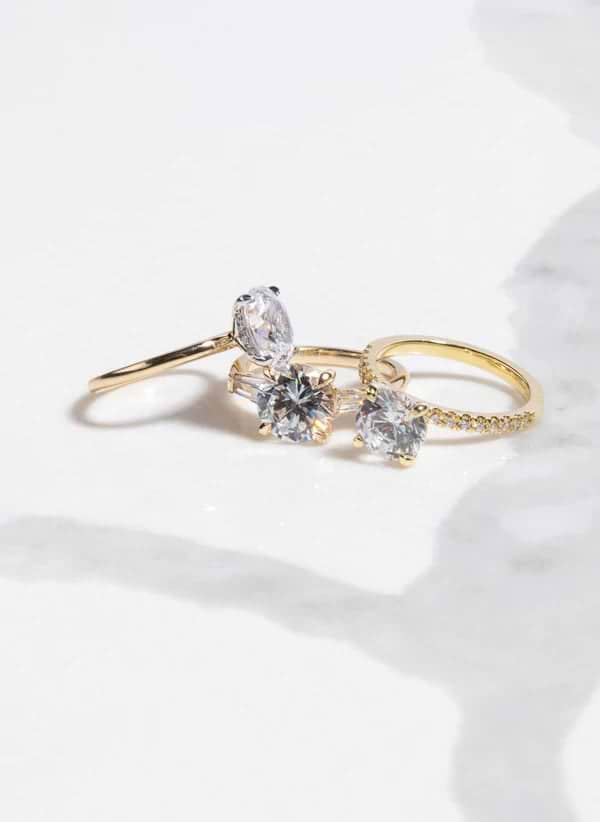
Mined diamonds dug up from the Earth - despite the price tag - aren’t rare or hold retail value (you can do better). Yet, we still believe in diamonds, the perfect symbol of forever, because they are the hardest and most brilliant stuff on Earth.
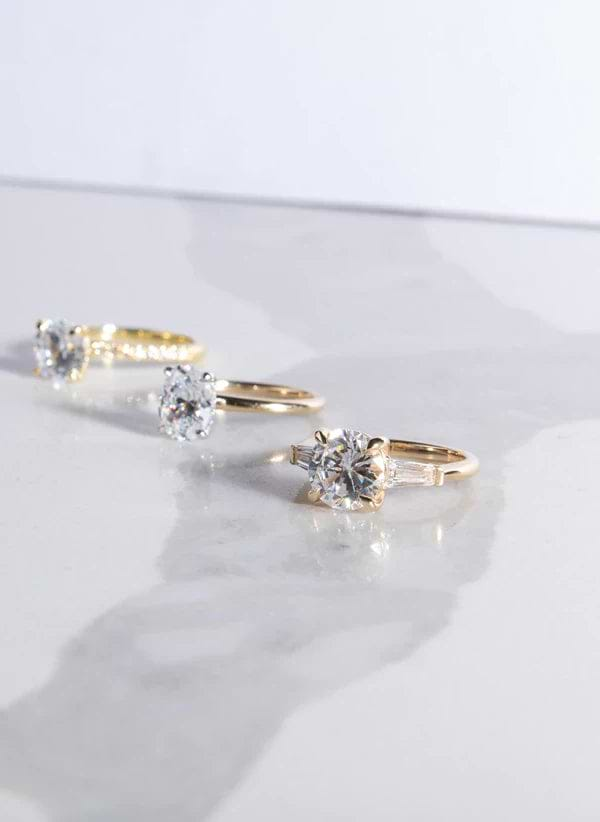
That’s why we love lab diamonds; they make better jewelry and are a better alternative to mined diamonds - without being a diamond "alternative"! You don't have to compromise a bit on quality, durability, beauty, or ethics.
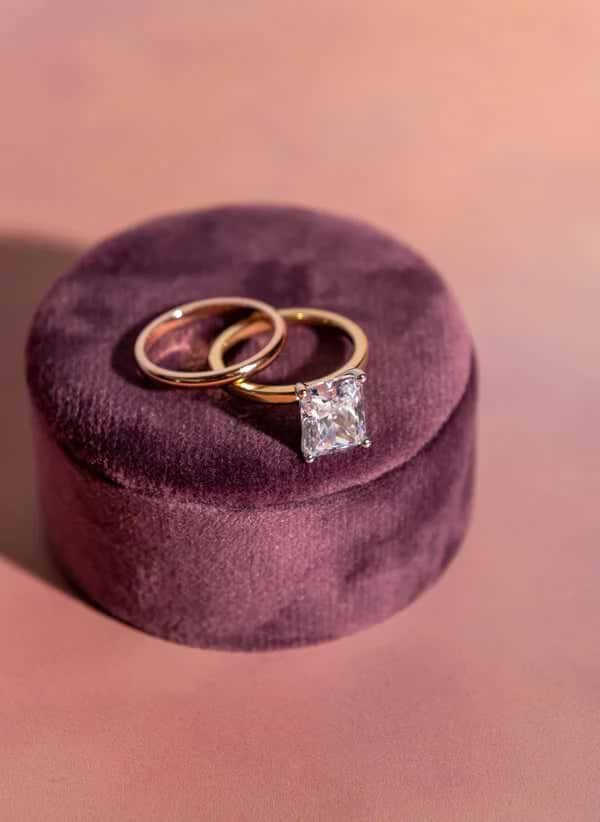
Yes, lab diamonds are graded and certified by reputable laboratories. And great news, you'll often find lab diamonds with better 4Cs since they're made in a controlled environment and higher quality is more accessible.
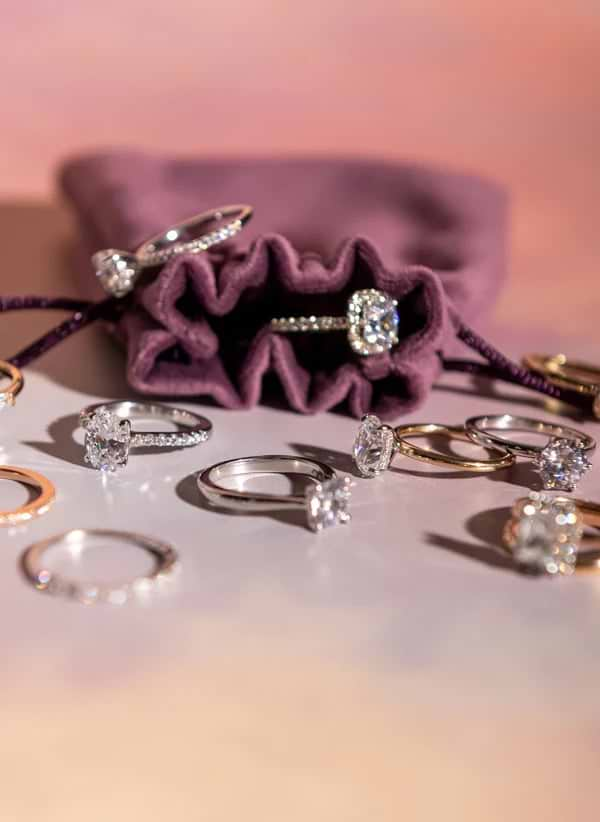
The grading process for lab created diamonds is the same for mined diamonds. In fact, even the world's premier grading lab, the GIA, now grades lab diamonds.
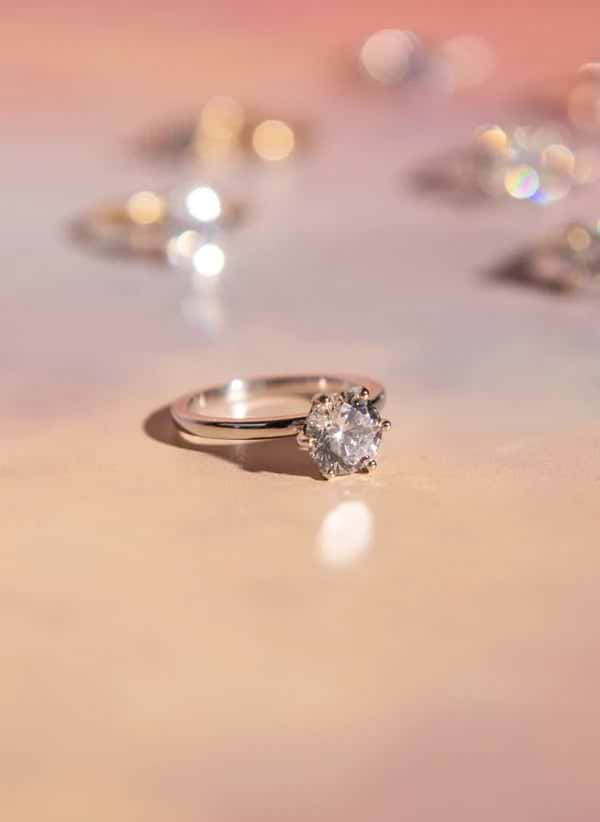
Most of our lab diamonds are graded by the American Gem Society (AGI), the International Gemological Institute (IGI), and the Gemological Institute of America (GIA).
Plum love

May 2, 2024
I knew that ethics were important to her and that she wanted a lab diamond. Plum Diamonds came through with amazing quality, and we constantly get compliments on the ring.
– Mike k
More FAQ
-

 Will lab diamonds test as real diamonds?
Will lab diamonds test as real diamonds?
Yes, lab grown diamonds are real diamonds made of carbon crystal, so they will test as real diamonds.
One thing to keep in mind: many standard diamond testers found at jewelers are very sensitive to the dirt and oil that naturally gets on diamonds with wear. These testers can’t detect any type of diamond when there’s a layer of grime between the diamond and the tip of the tester. We see this all the time, and some poor souls are being pranked in tiktok challenges, made to believe that their diamonds aren’t real.
Don’t panic if this happens to you, all you need to do is clean your diamond. Use warm soap and water or dip it in alcohol. After that, any diamond - lab or mined - will be detected by a properly functioning tester.
-

 Are lab diamonds treated?
Are lab diamonds treated?
Some lab grown diamonds will get a boost of extra high temp, high pressure exposure at the end of the growing process. This is not very unlike what might also happen in real life, under natural diamond forming circumstances.
Any other treatments such as filling are rare with lab diamonds, partly because their growing environments are engineered to produce high quality gemstones.
If your lab diamond were treated in addition to the extra dose of heat and pressure at the end of the growth cycle, the treatment would be disclosed on the certificate. Plum Diamonds doesn’t offer lab grown diamonds that have this type of additional treatment.
-

 Are lab grown diamonds fake?
Are lab grown diamonds fake?
Lab diamonds are not at all fake. Lab grown diamonds are real diamonds made from heat and pressure, like natural mined diamonds. They are different from natural mined diamonds in that they are made above ground in a lab. They are not dug up from the earth. They have no history of human rights abuses.
The price of lab grown diamonds is much lower than the price of natural mined diamonds for several reasons. Read about it here.
-

 Are lab diamonds laser inscribed?
Are lab diamonds laser inscribed?
Yes, certified, graded lab grown diamonds will be laser inscribed on the girdle of the stone. The girdle is like the edge of the diamond, and it wraps all the way around. It’s very tiny on properly-cut Diamonds, but you may still be able to read it under 10x magnification with a jeweler’s loupe. Don’t worry if you can’t, they can be very tricky to see, but a pro jeweler will still be able to make out the inscription.
The inscription will have the diamond’s certificate number and will identify it as lab made.
-

 Are lab diamonds all the same / are they flawless?
Are lab diamonds all the same / are they flawless?
Nope, just like natural diamonds mined from the earth, each lab grown diamond is unique.
Every though they are created in labs in controlled environment, each grow is different. The conditions required to create a diamond are volatile (Extreme heat! Extreme pressure!), and elements introduced in the air and growing chamber will impact the final diamond.
However, the lab diamonds at Plum are selected to be very high on the color and clarity scales. You’ll find that bigger, brighter, whiter lab diamonds are more accessible than their mined counterparts.
-

 Will lab diamonds get cloudy over time?
Will lab diamonds get cloudy over time?
No, since lab grown diamonds are real diamonds, they will not get cloudy over time. They have the same durability as natural mined diamonds because they are made of the same carbon and crystalline structure.
-

 Can lab diamonds be insured on my insurance policy?
Can lab diamonds be insured on my insurance policy?
Yes. We recommend that you first contact your existing homeowners or rental insurance company and ask about including your ring in your policy. They will give you rates and coverage options. You can also check with Jewelers Mutual, a reputable jewelry-only insurance company.
-

 What is phosphoresce?
What is phosphoresce?
Fluorescence and its cousin, phosphorescence, are naturally occurring phenomena that are more rare in lab grown diamonds than in mined diamonds.
Fluorescence is present when a diamond glows while being exposed to UV light (ultra-violet light, which includes sunlight and black light). Usually the glow is blue, but more rarely it can be white, yellow, even red).
Fluorescence is graded on a scale from None to Very Strong. Generally, some fluorescence is fine, and the slight blue hue can even make a lower color diamond seem whiter. But too much fluorescence and the diamond will look cloudy.
Plum’s diamonds have fluorescence grades of None or Faint. Fluorescence it is not a factor you’ll need to spend much time worrying about when choosing a lab grown diamond.
Phosphorescence is the glow you’ll see in diamonds AFTER they are exposed to UV light.









































































